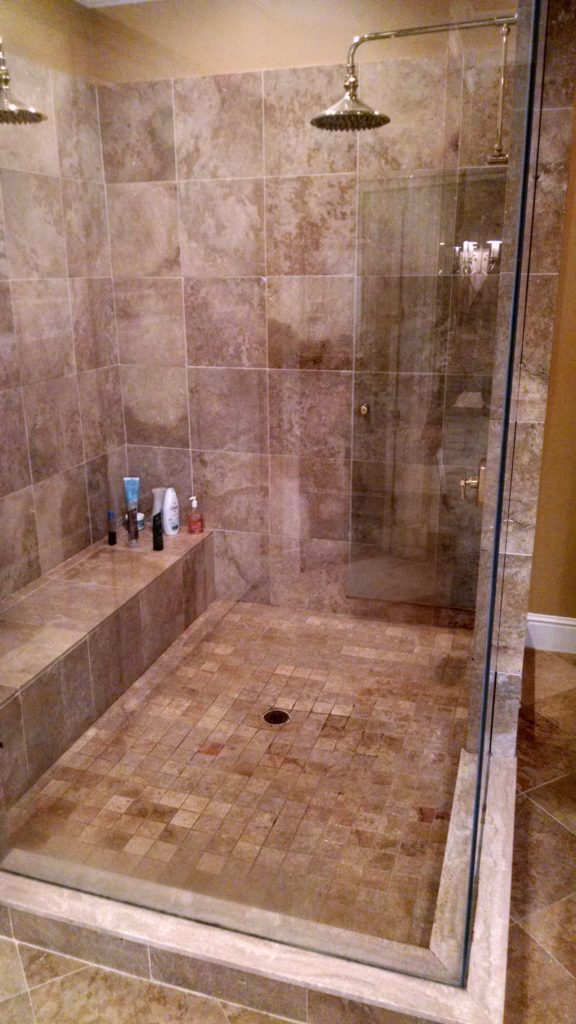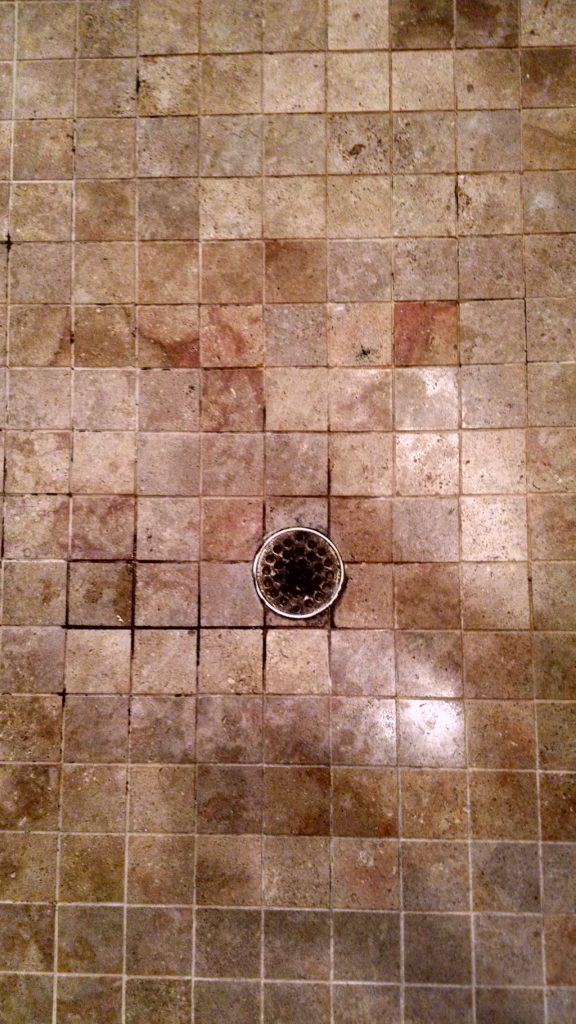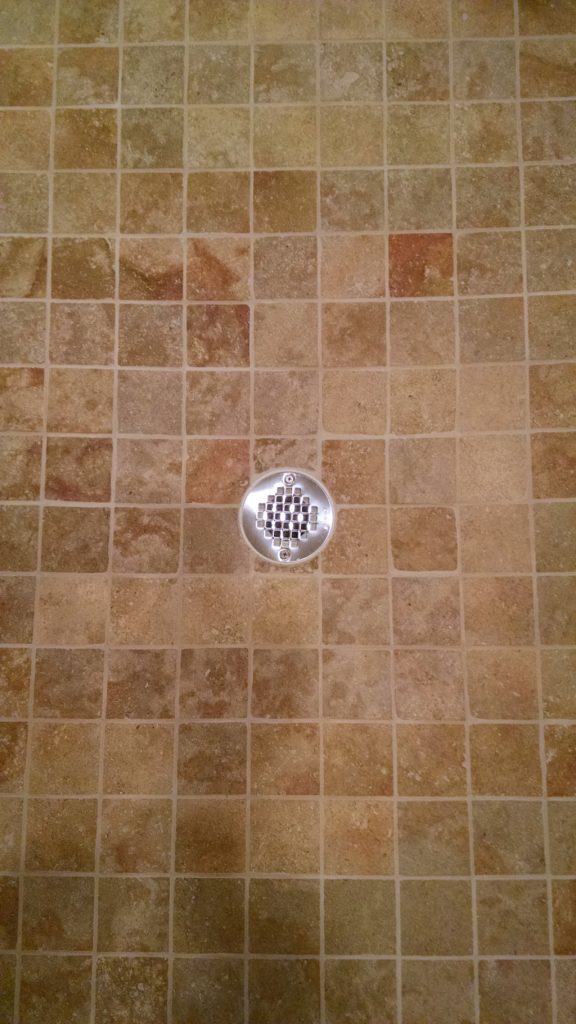This master bathroom consisting of travertine tile shower, tub-surround, and flooring had no professional maintenance in 10 years. The tile and grout had darkened due to soil absorption from lack of sealer, the shower had mildew, etching from use of acid-based cleaners and products, and heavy soap and mineral build-up.The grout was cracking and missing in large areas, especially around the shower floor. The damaged grout could have been caused by water erosion and possible improper installation of the grout such as too much water in the grout mix, over-washing the grout after installation, or lack of 425 Admix additive to the grout. Both the tile and grout had darkened from soil absorption (due to lack of sealer), the shower had mildew, etching from acid-based cleaners, and heavy soap/mineral build-up.

All loose and damaged grout was removed with specialized machinery attached to a HEPA vacuum system prior to floating in new grout. To make this restoration more complex, the original grout color was discontinued in 2006 (Hydroment Cameo) so we had to use the next available closest color on the market (Tec Cornsilk non-sanded).
I also mixed in Grout Boost additive at a ratio of 50% so as not to intensify the color as much as a 100% additive would have.
Repairs to the grout were floated wall to wall to make a consistent look across the floors and shower walls so that it didn’t look patched or repaired.

Bar soap use in stone showers is not recommended. Commercial bar soaps are actually detergent (not real soap containing lye and fats), are made for long storage life, and have all the glycerin removed from them. The products used in today’s bar soaps tend to seal water into the stone and grout and does not allow for any moisture trapped in the stone to evaporate.

The above is a picture that I took of the build-up created from bar soap usage in a stone shower. It takes some pretty strong products to remove the soap from the shower surfaces.
Always apply sealer!
The sealer that I use in most cases is 511 Porous Plus from Miracle Sealants. I saturated it on the stone surface and allowed it to dwell for about a half hour + (that way it soaks deep into the stones pores) before buffing it off. The sealer will do its job for up to 10 years on lightly used surfaces such as a tub-surround. However 5 years is to be expected on flooring and only 2 years in a shower provided that no harsh chemicals are used to clean the stone and that the homeowner switches to a liquid soap in the shower. Stone has calcium and minerals that don’t like acids.

I always like to add special touches (such as replacing the drain cover and cleaning out the closet flange) when doing restorations. It only makes my work look even better!